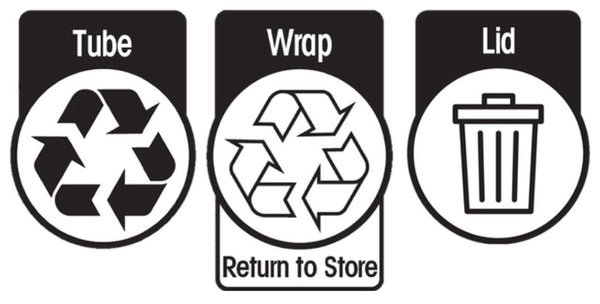How To Do Your Part For The Planet & Recycle Correctly

Key points
- Australia's recycling situation
- What contaminates recyclable materials?
- How does the contamination of recyclables impact the planet?
- How to recycle correctly in Australia
Introduction
Recycling is a common practice in Australia, with the majority of residents claiming that they engage in it. However, even for those who recycle, many don't understand how to do it correctly. This signifies a large amount of the waste going into landfills and oceans as well. So how can you recycle correctly to do your part for the planet?
Australia's recycling situation
According to a WWF Australia report, Australia produced 3.4 million tonnes of plastics in 2017-18. Only 9.4% - 320,000 tones - was recycled. Of that amount, 46% (145,700 tonnes) was reprocessed and 54% (174,300 tonnes) was exported for reprocessing.
The success of a waste and recycling system depends on consumers sorting their rubbish carefully to avoid contamination, knowing which bin goes where, and making sure that the recyclables are not contaminated by food, liquids or other non-recyclable materials.
What contaminates recyclable materials?
Recycling contamination is a big problem for many recycling facilities. Contamination occurs when materials are sorted into the wrong recycling bins (placing a glass bottle in a paper recycling bin for example), or when materials are not properly cleaned—for example, when food residue remains on a plastic yogurt container.
You don’t know what it is made of but put it in a recycle bin anyway? It is called "wish-cycling", and it is one of the major contributors to contamination.
According to an article from the University of Colorado, several common contaminants should be avoided in recycling bins such as:
- Shredded Paper
- Plastic Bags
- Scrap metal
- Hazardous Waste
- Non-recyclable plastics
- Flattened containers
- Caps and Lids
- Liquids
How does the contamination of recyclables impact the planet?

Recycling is a great way to reduce the amount of waste that goes into landfill. However, putting the wrong items into the recycling bin can "contaminate" the rest of the recyclables, sending the whole bin load to the landfill instead. The most common reasons for this include:
- Recyclable plastics will go directly into a landfill if they are contaminated with food, cosmetics, and paper labels.
- Recycling becomes more expensive as money and time are required to separate contaminants. Examples of this include having to stop sorting machinery to disentangle non-recyclables, causing delays and added expenses.
- Improper items can expose recycling workers to hazardous wastes and cause unsafe conditions. Improper items include electronics with batteries, unfinished aerosol cans and liquids in glass bottles.
- Quality of recyclable byproducts decreases if contaminated, therefore reducing the market value. For example, the quality of recycled plastic decreases when mixed with other materials such as food scraps or paper products that aren't made from plastic resin.
How to recycle correctly in Australia
When recycling, it is important to check with your local council about what can be recycled in your area. Free online tools such as Greenius by Cleanaway, also provide clear bin instructions specific to your local area. A common rule is to only put "loose, clean and dry recyclables" into the kerbside recycling bin. They should never be bagged.
Understanding recycling bin colors
Kerbside bins in Australia generally use the following colors for different types of waste:
- purple for glass
- green for FOGO
- yellow for mixed recyclables
- red for household rubbish.
What can I put in kerbside recycling bins?
To determine whether a product can be recycled, check the packaging for the Australasian Recycling Label (ARL). The ARL specifies which parts of a product's plastic packaging can be recycled and what should go into general waste.
Australian Recycling Label (ARL)

Image source: Planet Ark
Avoid these common mistakes:
- Greasy cardboard and other packaging is not recyclable
- Tissues and paper towels are not recyclable
- Cleaning cloths and wet wipes are not recyclable
- Unrinsed containers can contaminate recycling
- Bioplastic containers are not recyclable
- Takeaway coffee cups are not recyclable
- ‘Recyclable’ claim on a product label doesn’t mean ‘recyclable via kerbside collection‘
Conclusion
Now that you know how recycling in Australia works, hopefully, you can see what a big difference it can make! It only takes the proper information to get started, so keep the things you need most in mind as you work your way through your routine. By doing so, you're taking small steps towards making your lifestyle more sustainable and helping out our planet at the same time.